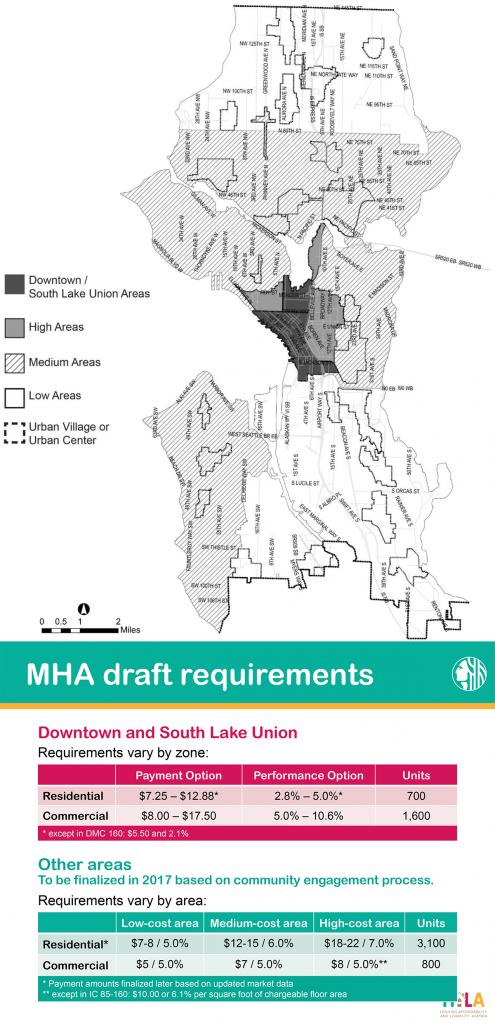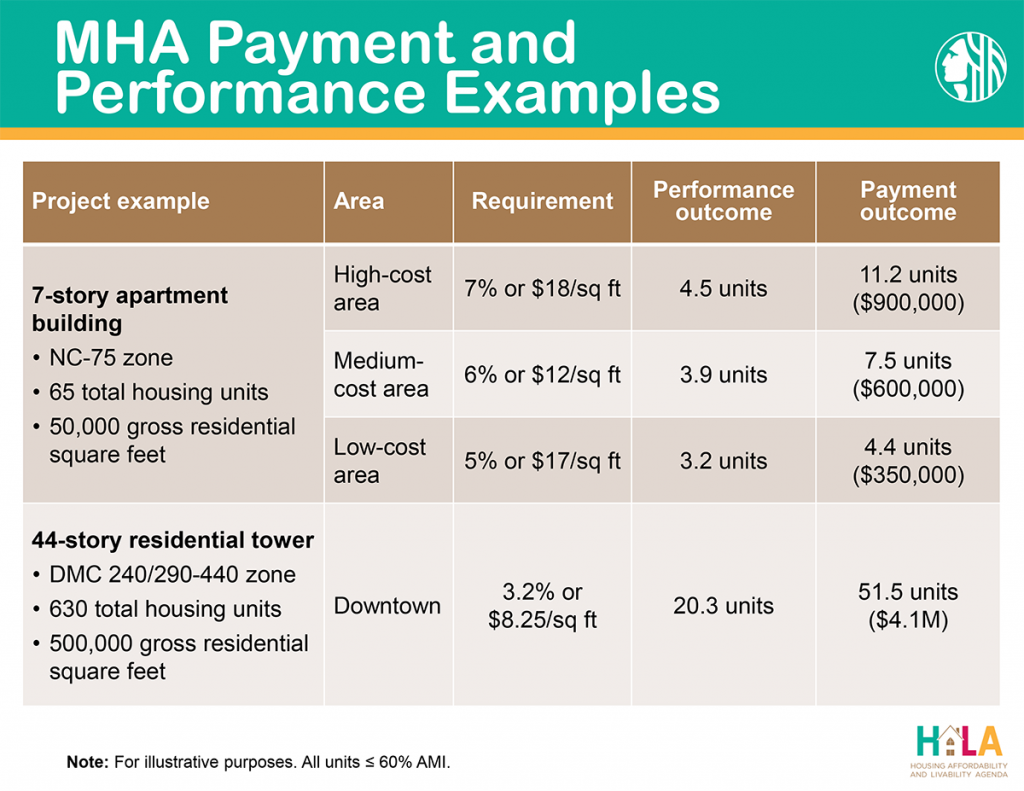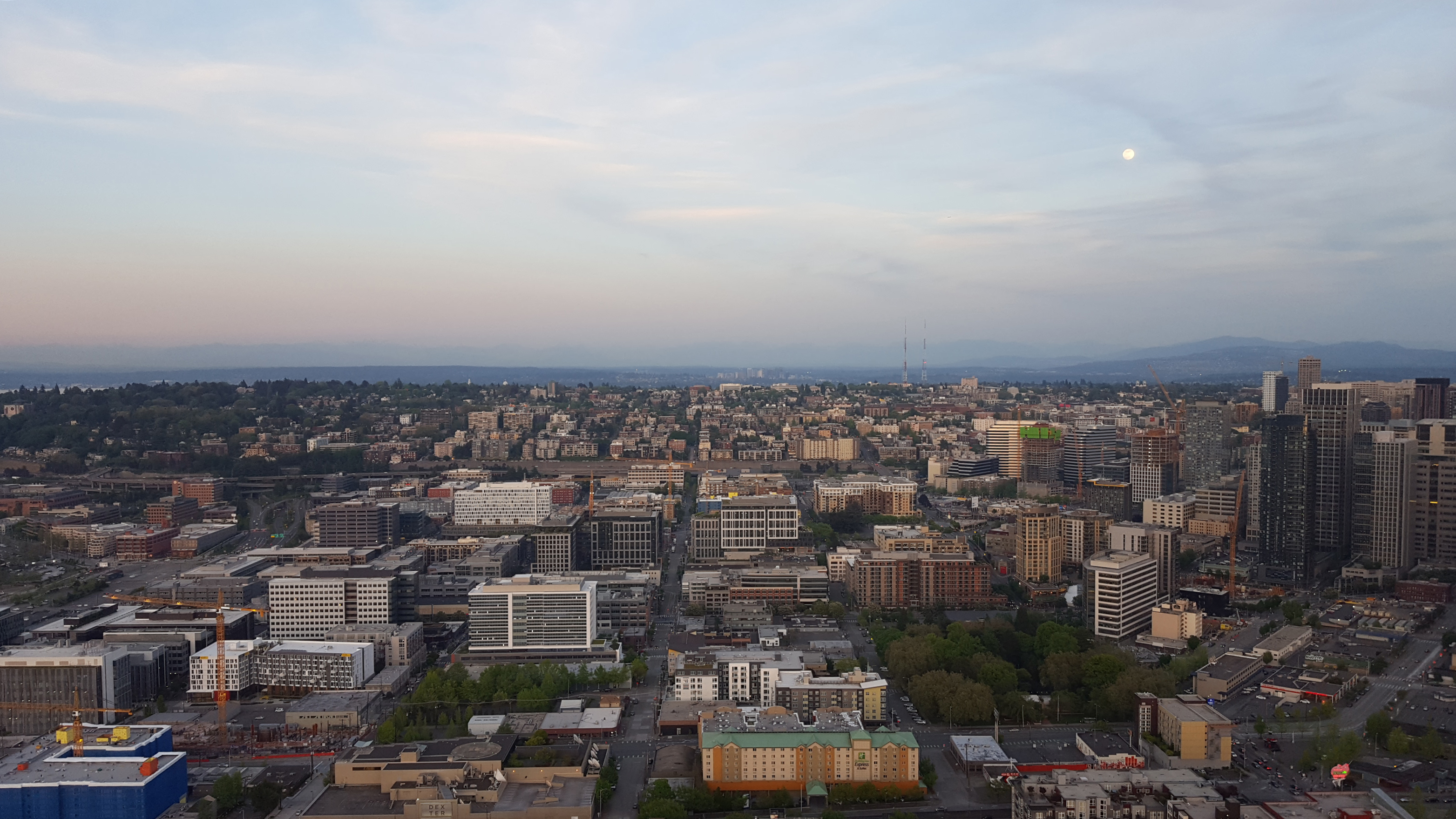Earlier this month, the Seattle City Council’s Planning, Land Use, and Zoning (PLUZ) Committee deliberated on the details of the proposed Mandatory Housing Affordability-Residential (MHA-R) program. This is part of Mayor Ed Murray’s Housing Affordability and Livability Agenda (HALA) to stem residential displacement and to increase the opportunities for lower-income people to live in Seattle near their jobs. I previously wrote about the MHA-Commercial program, which would apply to commercial development. The goal of the combined MHA-R and MHA-C programs is to produce 6,200 affordable units over the next ten years.
“Affordable” in this case is defined as renters who earn less than 60 percent of the area median income (AMI), which is currently $37,980 for one person and $54,180 for a household of four, paying less than 30% of their income on housing and utilities. For that first example, that comes to $950 per month at a time when the average rent for a one-bedroom apartment citywide is $1,554, and for buildings less than five years old that average goes up to $1,854. For ownership households, the units must originally be affordable at 65% AMI and may go up to 80% AMI at future resale. Seattle residents falling into these income brackets are among the most severely burdened by housing costs; the associated Director’s Report offers more details on the failings of the private market, but suffice it to say:
Approximately 38% of all households in Seattle, or roughly 105,000 households, are cost burdened at either a moderate or a severe level…[and] cost burdens fall disproportionately on households of color.
All units created under the program must be price-restricted for 50 years, and units created under the MHA-R program cannot be double counted for the Multifamily Tax Exemption program. The Office of Housing will monitor compliance and performance.
Council Bill 118692 doesn’t actually create the create the MHA-R program just yet, but rather sets up a framework by building it into the Seattle Municipal Code. The program is dependent on future zoning changes for implementation: the highrise areas of the Downtown and South Lake Union urban centers are to be upzoned by September 2016; and citywide the Neighborhood Commercial, Commercial, Seattle Mixed, Lowrise, Midrise, and Highrise zones are to be upzoned by September 2017. In most cases, the zoning changes will allow an extra floor of buildable area. The latter batch of zoning changes will also rezone single-family areas within urban centers and urban villages to multi-family. Specific changes in the University District and 23rd Avenue in the Central District will also apply.
Unlike the MHA-C program, which exempts the first 4,000 square feet of commercial projects, the MHA-R program will require all residential development (including alterations of existing buildings that add units or expand an existing structure, but excepting residential development in single-family zones and certain social housing projects) within the applicable areas to participate. Buildings that have a mix of commercial and residential space will participate in both programs, requiring developers to calculate the proposed units and square footage accordingly to determine the amount of affordable housing necessary to provide.
But similar to the MHA-C program, there will be two options for MHA-R program participants:
- Performance: build the affordable units on-site, or
- Payment: pay into a city fund for producing and preserving affordable units elsewhere.
The rate of the MHA performance option and cost of the payment option are summarized in the map and chart below, but note that these are draft numbers that will be finalized with the implementing zoning legislation.

For the performance option, affordable units must similarly sized as market rate units and be equally distributed throughout the building. For the payment option, the City will use accumulated funds to build and preserve affordable units in urban villages, near frequent transit lines, close to places of opportunity like jobs centers, and in communities that are at risk of displacement. The City estimates a typical off-site unit costs $265,000 to build and that it will use the accumulated funds to pay up $80,000 of that. The rest would be leveraged through low-income housing tax credits and tax-exempt bonds.
The table below illustrates an example of the options developers would have when building two different types of buildings. It reveals that the City actually expects to get more low-income units out of the payment option, especially in the medium- and high-cost areas of the City.

These options are very similar to Seattle’s existing incentive zoning programs, in which developers are allowed to increase height or floorplate size in exchange for either building or paying for affordable units: in zones with height limits above 85 feet they have both options, and in zones with height limits of 85 feet or less developers opting in are required to provide affordable housing on-site. However, the key difference is that incentive zoning is completely voluntary and mostly focused on Downtown whereas the MHA programs are mandatory and will apply to any area with increased development capacity citywide.
The Mandatory Housing Affordability programs will ensure that lower-income units will be available all over the city in a variety of neighborhoods and different types of buildings, increasing the options for homeseekers towards the bottom of the income scale. The programs don’t promise to completely fulfill the needs of poor and marginalized Seattleites, nor will they prevent displacement when redevelopment occurs in today’s hot real estate market, but they will make progress towards greater equity, affordability, and sustainability.
There is a public hearing this morning on the MHA-R program at 9.30am at Seattle City Hall Council Chambers. If you can’t attend, you can e-mail your comments to council@seattle.gov.
Scott Bonjukian has degrees in architecture and planning, and his many interests include neighborhood design, public space and streets, transit systems, pedestrian and bicycle planning, local politics, and natural resource protection. He cross-posts from The Northwest Urbanist and leads the Seattle Lid I-5 effort. He served on The Urbanist board from 2015 to 2018.


